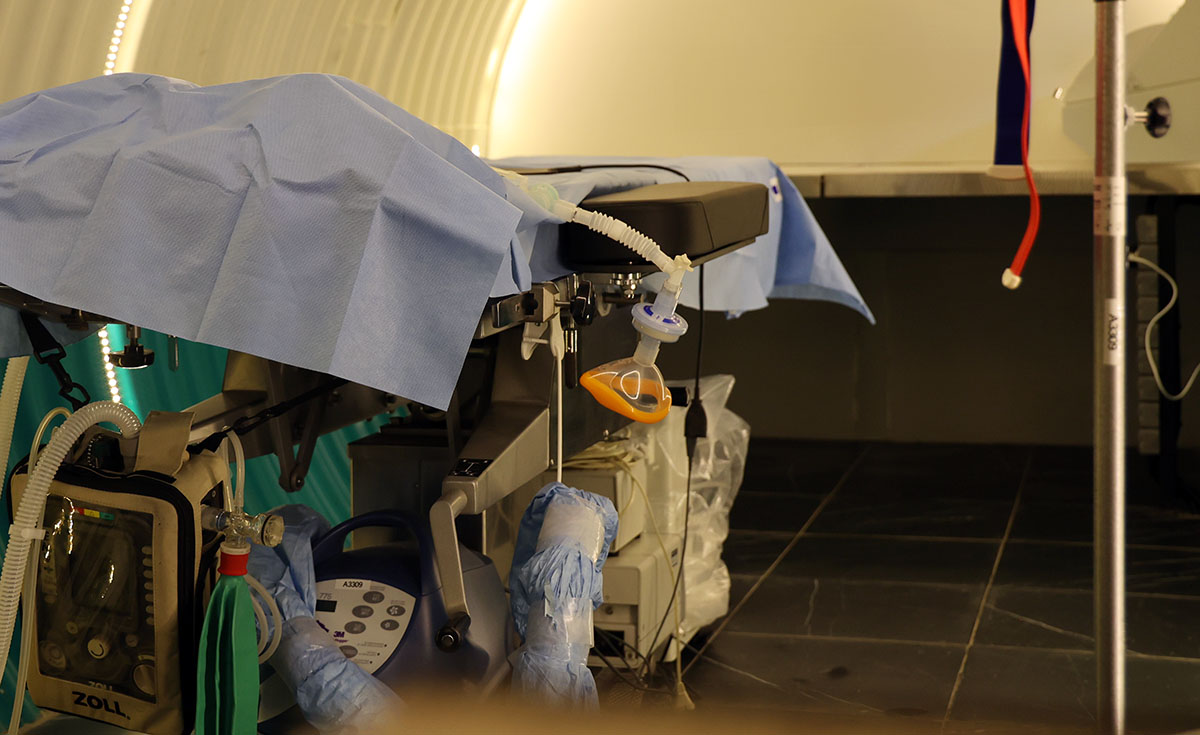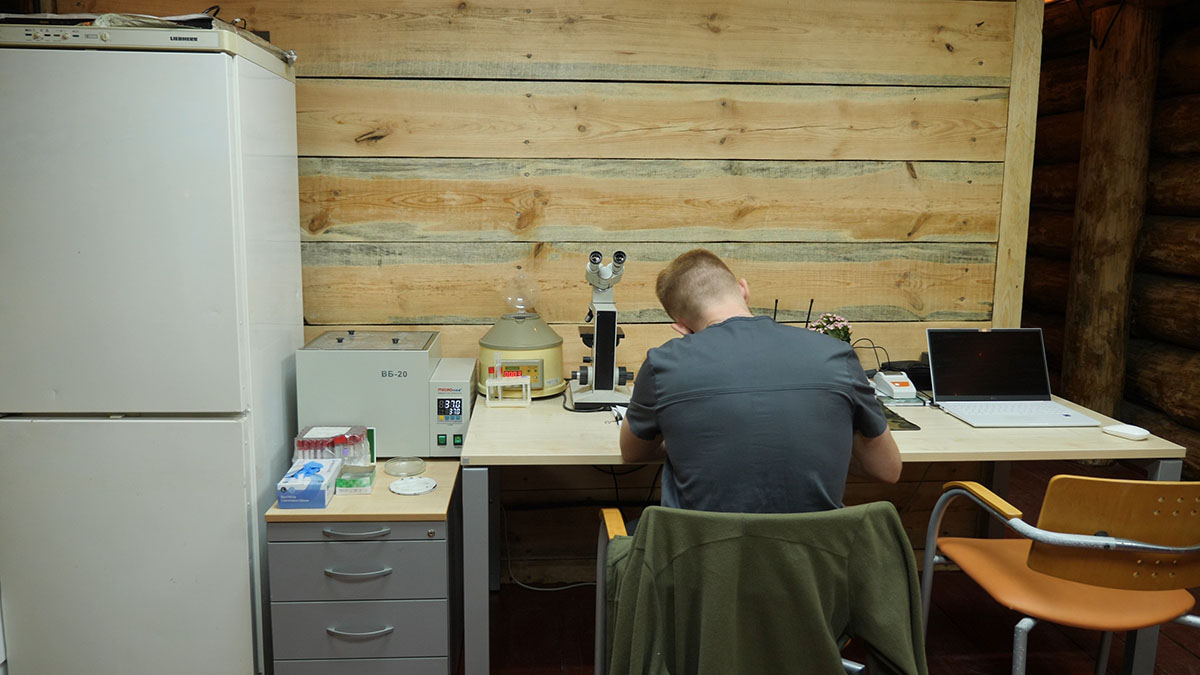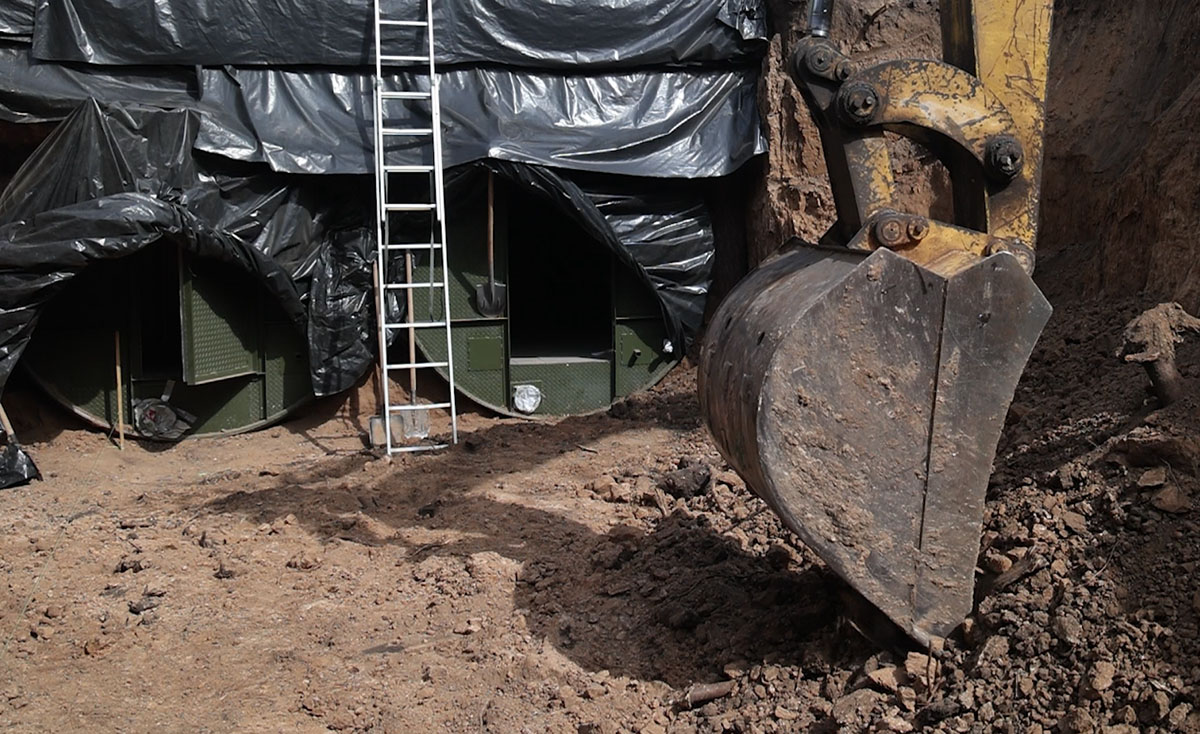Advantage in a war depends not only on the weapons, ammunition and military equipment available to the army, but also on the number of combat-ready soldiers. In contrast to the aggressor, Ukraine’s command has been trying to preserve the lives and health of its defenders as much as possible since the first days of the Russian invasion. But war is war, and Ukraine also suffers losses.
According to alarming statistics, around 90% of seriously wounded soldiers may die before reaching the hospital because of injuries that are incompatible with life. Given this, the provision of first aid on the battlefield and the emergency evacuation of a seriously injured person to a hospital are important factors in saving a wounded person’s life. But inpatient hospitals can be located at a considerable distance from the front line, which prolongs the evacuation time and has a negative impact on the condition of the wounded.
Domestic steelmakers offered a solution. In early September, Metinvest Group, as part of Rinat Akhmetov’s Steel Front initiative, built the country’s first underground stabilisation centre for the Armed Forces of Ukraine on the front line. The underground facility is based on the model of steel “hideout” bunkers, which have been modernised and modified to meet the needs of military medics and are already being produced by the steel enterprise.

— Have you already received feedback from military medics regarding your underground hospital? What do they like and what do not?
— All the feedback has been positive. So far, I have not received any negative feedback from military medics. They have some minor suggestions for improvements, such as installing additional shutters at the entrance where the ambulances drive in. This will allow them to close the entrance during the winter, as well as when it rains, the wind intensifies, and so on, and keep the hospital warm inside. Before that, there was a summer version with plastic shutters that vehicles drove through. We are now actively working on this request, and I think we will make the necessary arrangements by the end of October.
This is the only additional request we have received so far. Otherwise, we hear only positive feedback and gratitude. We developed this project together with military medics and considered all the additional requests at the construction stage. These suggestions emerged practically right up to the deadline — just before the hospital was commissioned.
For example, during the final stages of construction, it turned out that we needed to add a restroom and a recreation room for the soldiers who are feeling more or less well and are awaiting evacuation. So, we had to set up an additional room.
We considered and implemented all these aspects during construction because we were in daily communication with military medics. And now we are working with them on new projects. Next year, we are planning to build at least two more underground hospitals at Metinvest’s expense. Of course, if everything goes well and the Group has the necessary financial resources to do so.
— What is unique about this hospital? What are its capabilities?
— The hospital is fully camouflaged and protected, including with electronic warfare equipment. It is energy independent thanks to two generators located nearby in a separate underground facility. The generators fully supply the hospital with electricity if power from the main grid is lost. In addition, a drilled well supplies the underground facility with water, septic tanks and the necessary equipment for the sewage system. To ensure air circulation, the underground hospital is equipped with an air supply and exhaust ventilation.
— How many people can one such stabilisation centre accommodate? How many people can it treat per day?
— The hospital’s capacity is up to 100 wounded per day. In other words, it is a military hospital at the level of an operational and tactical grouping of troops.
It is unique because it has two operating rooms. Medics can simultaneously perform surgical interventions of any level of complexity without transporting the wounded to a distant inpatient hospital, thus saving time. The hospital also includes stabilisation and intensive care units.
I cannot tell you the number of wounded who have already been treated in this hospital. But I can say that a significant number of soldiers have already received medical care there, and many lives have been saved within its walls.
It is important to understand that this is, to some extent, a transit hospital that provides emergency medical care, after which the wounded are evacuated to inpatient hospitals within three to five hours, where they undergo treatment.

— What medical equipment is already available in the existing hospital and how will the other underground stabilisation centres be equipped?
— This underground facility is equipped with the full range of medical equipment. Some of it was provided by the Ministry of Defence and military medics, mainly for surgical rooms, including medical aspirators (suction), blood pumping systems and more. Military medics also supplied the hospital with special equipment for providing medical care to soldiers with serious injuries.
Metinvest Group purchased cardiac monitors, oxygen concentrators and ventilators.
— Who requests the necessary equipment? The Ministry of Defence, the Ministry of Health or local commanders?
— We had horizontal communication. Roman Kuziv, the acting commander of the “East” medical forces, provided the ideological inspiration. We developed this project together with him. At later stages, when we had to get various approvals, we involved experts from the Ministry of Defence, the Medical Forces Command and so on. But the key person has been Roman Kuziv, who initially proposed this idea, and then we worked together to implement it.
— How long did it take from the idea of the underground stabilisation centre to the commissioning of the facility?
— It took us four months: we started in April and finished in August. In fact, this is the period from the idea to the moment when the first wounded person arrived at the hospital.
Now that we have some experience in implementing such projects, we can implement it faster. We already know a lot of things necessary for the design and arrangement of such structures.
— At what depth and minimum distance from the front line can such a bunker be installed?
— This underground facility is located several dozen kilometres from the “zero” line at a depth of six metres. On top of that, there are three to four layers of protection made of wooden logs, sandbags, soil, and so on. We have taken a very serious approach to the safety of the people who will be staying at the stabilisation centre.
— What can such an underground hospital protect against?
— It must protect against artillery shells. Our steel bunkers, which serve as the basis for the underground hospital, are certified. During the tests, our steel hideouts were buried to a depth of less than six metres and shelled with 152 mm shells and 120 mm mortars. The artillery strikes confirmed that the steel bunker does not suffer damage, protecting the personnel inside.
For example, there was a case in the Donetsk area, where a Russian guided aerial bomb fell near our positions, which were equipped with an underground bunker with steel hideouts, and a barrel with soldiers was covered with soil. After a day and a half, they were dug out, all alive and unharmed. They had communication and air supply, but they could not get out of the soil-filled bunker on their own. In the end, everything turned out well.

— How quickly can such a facility be installed and then moved to another position if necessary?
— From a practical point of view, it would be quite difficult to move this structure. It would involve dismantling several hundred cubic metres of timber, transporting it somewhere, and so on. I don't think anyone would be doing this while the front line is moving.
In my opinion, this can happen in the following way. If the front line moves in an unfavourable direction for us and there is a need to relocate the hospital, all expensive equipment and everything that can be quickly transported will be removed and moved to another location. The hospital could be used, for example, as a command post, which the military will occupy, equip and use for their own needs.
If we must retreat, there will be a fortified zone. And then, I believe, in order not to leave this underground facility to the enemy, it will be destroyed along with the occupiers.
But I hope that this facility will function as an underground hospital, providing medical care to our soldiers, and we won't have to witness any unwanted movement of the front line.
— As far as I understand, setting up an underground facility is not an easy task, and its installation requires specialised equipment?
— Yes, we used drilling rigs, excavators and cranes to install this hospital. We tried to do everything without drawing the enemy's attention, but there were still cases when Russian reconnaissance drones flew over the site, trying to find out what kind of facility it was. But despite all this, we managed to properly camouflage and protect it.

— According to your estimates, what is the current need for such underground field hospitals? How many are needed on the front line?
— If we are talking about hospitals of this level, equipped with operating rooms and everything else, then at least 20 units are needed on the front line.
We also have several designs for the brigade level, and around 200 of these units are needed.
And we have a smaller facility for the battalion level and even more of these are needed.
In my opinion, hundreds of underground hospitals of various levels are required to ensure the proper provision of medical care and save the lives of our defenders.
— Are you able to meet this demand?
— We can meet it, but together with the state. A private company cannot replace the state and do everything at its own expense.
Metinvest built this hospital fully at its own expense, except for the special equipment provided by military medics. In total, the Group spent UAH20 million on this stabilisation centre, including UAH7 million on medical equipment and UAH13 million on steel hideouts, their arrangement, repair and installation.
We will not be able to meet this demand financially on our own. Spending UAH20 million on each large hospital is a significant financial burden. Even if we are referring to cheaper facilities at the brigade or battalion level, considering their quantity, it will still be a significant amount of funds. Unfortunately, we cannot plan to spend, for example, half a billion hryvnias on the construction of hospitals next year. And therefore, these should be joint projects with the state.
— Are there any similar hospitals in the world?
— Based on my communication with military medics, such hospitals do exist. But they are not adapted to a war like the one in Ukraine. Foreign analogues are stationary above-ground modular hospitals that provide a similar range of services as our facilities. But everyone understands that if such a hospital or camp is located somewhere in an open area a few dozen kilometres from the front, it is only a matter of time before the Russians attack it with guided aerial bombs. Even if it is marked with red crosses on all sides. That is why European analogues, although they are not worse in terms of medical equipment, are not suitable for our conditions.
In my opinion, the experience that Ukraine is currently gaining will be studied and implemented by Western partners in their military developments and doctrines. Because when you are fighting an enemy like Russia, which has its own air force, bombs and a wide range of munitions, it is necessary to move vital facilities as deep underground as possible. And Western partners expect that they are fighting terrorists armed with rifles who cannot do much damage.
— How do you assess the prospects for exporting your project? Will such an underground hospital be in demand and competitive in the international market?
— I think it will definitely be competitive as a concept and an idea. But, frankly speaking, the Group has not seriously considered promoting this product for export. Currently, our main focus is on assisting the Armed Forces of Ukraine. We are concentrated on that rather than on any commercial activities.
Ultimately, it would be inappropriate to develop one project during the war, talk about it, and then start selling it for export. Now is not the time for that.
After the war, I think that certain developments that we have created together with the military, such as methods of building hospitals or metal structures for them, could be promoted on the international market.
